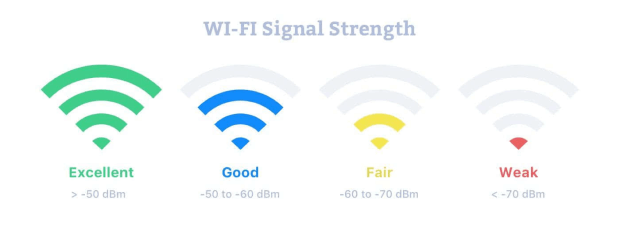
Choosing the proper multifamily loan option can be daunting. The tidal wave of facts available to us on every occasion we contact our phones is intimidating, to say the least. Even the savviest real estate buyers are cognizant that they don’t know all their options. The largest stores within the international lease monetary intermediaries suggest and set up the financing for themselves — why shouldn’t you? Start by searching for extra records on the primary multifamily mortgage options, alongside a few pros, cons, and necessities.
Agency
Agency debt speaks of Fannie Mae and Freddie Mac, each with dozens of specific loan applications and constantly competing against each other. There are the Fannie Small Loans, which can be special because they offer completely amortizing loans (fixed and completely amortizing as much as 30 years). For loans with a touch of extra hair on them, Fannie Mae Delegated Underwriting and Servicing (DUS) may be the way to move. DUS ultimately puts some of the decision-making returned in the lender’s hands, as opposed to the old way of kicking loans back to the General Services Administration (GSA) for approval.
Larger, trustworthy loans are an excellent match for Freddie Mac conventional. Once you get into smaller markets, even though spreads widen and leverage drops. Freddie additionally has a very popular small-balance mortgage (SBL) application. This is wonderful in the most important U.S. Markets. For loans from $1 to $7 million in massive markets, a Freddie SBL is the way to go.
Agency loans are usually going to search for the important thing principals (KPs) to have the accurate credit score, a cumulative internet worth extra than the loan quantity and liquidity greater than 10% of the loan amount (outside of retirement money owed) submit-closing (but not from the proceeds of a remaining). With a great brokerage, you may get corporate loans as small as $1 million or maybe a bit less.
CMBS
CMBS loans are a tremendous alternative for KPs who don’t meet the net worth and liquidity requirements of enterprise debt or fall outside of their once-in-a-while inflexible container in some other way. CMBS lenders securitize and promote loans submit-final. They are attention almost entirely on the best of the underlying asset. This means they may, at times, be extra stringent on lockbox necessities, for instance, but maybe easier on KP necessities or other nuances.
Something else to be stated here is that they do not have options for step-down prepayment penalties — you’re commonly caught with defeasance, even though you’ll be able to negotiate yield upkeep. Application charges tend to be heavy, as do felony expenses, due to the character of the securitization process. But in case you’re operating with an excellent shop, those loans can be near quick and with less red tape than some company options.
The options above provide fixed-price phrases up to ten years or extra, hobby-only options, and 30-year amortizations, and are non-recourse with preferred carve-outs. Agency and CMBS loans are for stabilized marketplace charges, less expensive, senior, and scholar housing. Leverage will usually be as much as eighty mortgage to the fee (LTV) for the organization and 75% for CMBS.
FHA/HUD
The Department of Housing and Development (HUD)-insured multifamily loans often get a horrific rap. Folks associate them with loans that take a long time to close, have plenty of purple tapes, and are best for lower-priced residences. Some of that is inaccurate. The crimson tape and timeline are undoubtedly a chunk extra onerous than business enterprise debt; but, a HUD 223(f) mortgage, with the proper lender, may additionally only take another 30-60 days to close than a corporation loan.
Although the Federal Housing Administration (FHA) debt may not be ideal for purchase execution, it’s often exceptional for recapitalizations. FHA-insured everlasting financing is generally non-recourse, up to eighty five% LTV, fixed and completely amortizing for as much as 35 years (subject to the ultimate monetary life of the property), and priced higher than Fannie, Freddie, and CMBS, because of the decrease risk score of debt guaranteed with the aid of the U.S. Government.
Life Company
Life business enterprise debt is a notable alternative for debtors with Class A property in the medium to massive markets (preferably passive) who are focused on pricing and amortizing their debt. Essentially, you’ll get lower-leverage non-recourse debt at the most competitive interest fees in the marketplace, with notably shorter amortizations. This is within the small, stabilized products (assume among $2 million and $15 million). Once you get bigger and run on Class A infill kind of product, existing groups can paradoxically push out the very best leverage and maximum competitive phrases — however, on a very selective basis.
Bank Money
Do you want to walk into your nearby financial institution? With low sufficient leverage on a huge sufficient mortgage (assume over $5 million and beneath 65% LTV), you continue to have a shot at non-recourse debt. Still, you’ll also have shorter terms (approximately 5 years fixed) and amortizations (often 20-25 years). Rates may be higher. However, prepayment penalties are lighter, and remaining costs almost genuinely might be less difficult at heart. It is a dance of the significance of recourse versus non-recourse; it’s handling long-term hobby rate chance as opposed to the potential to go out greater without problems, and it’s most surely a question of cash flow as opposed to amortization.
And then, there’s the whole lot else. Out in an area where Wall Street meets our online world sits a stack of dry powder so excessive that, in case you sneezed in front of it, poverty could cease. As such, there are greater mortgage packages than stars in the sky, with danger-adjusted pricing of a path, so one can raise your leverage and reduce execution risk. The bottom line is you’ve got options, and it is your responsibility as an investor to understand them or to rent someone who does.












